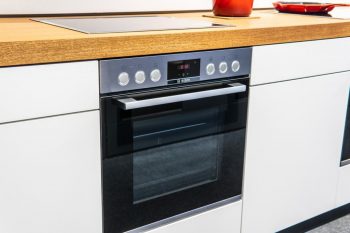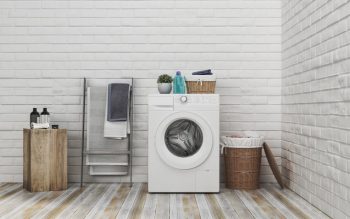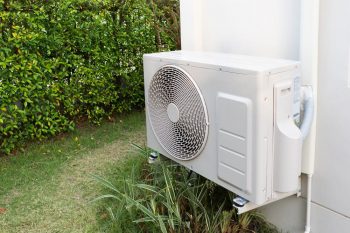
If you’ve ever found yourself asking, “Why is my AC blowing room temperature air?” then you’re not alone. This is a common problem faced by many homeowners, especially during the hot summer months. The good news is that understanding why this happens and how to fix it can help you maintain a comfortable indoor environment. This comprehensive guide will provide you with in-depth information on the causes of this issue, potential solutions, and when to call a professional.
Your AC might be blowing room temperature air due to several reasons such as low refrigerant levels, frozen evaporator coils, a clogged air filter, thermostat issues, a blocked or dirty condenser, or electrical issues. You can troubleshoot by checking thermostat settings, replacing or cleaning the air filter, inspecting the outdoor unit, and checking the circuit breaker. If these steps don’t help, it’s recommended to call a professional HVAC technician. Regular maintenance can prevent such issues.
Understanding How Your AC Works
Before delving into the reasons why your AC may not be cooling your home effectively, it’s important to understand how an AC system works. Your AC unit uses refrigerant to absorb heat from the indoor air and release it outside. The cooled air is then circulated back into your home, reducing the overall temperature. The main components involved in this process include the thermostat, evaporator coil, compressor, condenser, and the air filter.
Common Reasons for Your AC Blowing Room Temperature Air
1. Low Refrigerant Levels
Low refrigerant levels are one of the most common reasons why an AC unit may blow room temperature air. If your AC is low on refrigerant, it won’t be able to effectively absorb heat from the air, resulting in warm air being blown out. This could be due to a refrigerant leak or simply due to running low on refrigerant.
2. Frozen Evaporator Coils
Frozen evaporator coils can also be a culprit. If the evaporator coils become too cold, they won’t be able to absorb heat from the air, causing the AC to blow warm air. This is often caused by inadequate airflow due to a dirty air filter or blocked return vents.
3. Clogged Air Filter
A dirty or clogged air filter restricts the flow of air over the evaporator coil, causing the coil to freeze and the AC to blow warm air. Regularly replacing or cleaning your air filter can prevent this problem.
4. Thermostat Issues
If your thermostat is set incorrectly or has dead batteries, it may not be properly controlling your AC system, causing it to blow room temperature air.
5. Blocked or Dirty Condenser
A dirty or blocked condenser can reduce the efficiency of the AC system, causing it to blow warm air. Regularly cleaning the outdoor unit can help prevent this issue.
6. Electrical Issues
Electrical issues, such as a malfunctioning compressor or a blown fuse, can also cause your AC to blow room temperature air.
Troubleshooting Tips
Before calling a professional, there are a few steps you can take to troubleshoot the issue:
- Check the thermostat settings: Ensure the thermostat is set to “cool” and the temperature is set lower than the current room temperature.
- Replace or clean the air filter: A dirty air filter can restrict airflow and reduce the AC’s cooling capabilities.
- Inspect the outdoor unit: Make sure the outdoor unit is clean and free of debris.
- Check the circuit breaker: If the circuit breaker has tripped, reset it.
When to Call a Professional
If the above troubleshooting steps don’t resolve the issue, it’s time to call a professional HVAC technician. An HVAC professional can accurately diagnose and fix issues such as refrigerant leaks, faulty compressors, or electrical problems.
Regular Maintenance is Key
Regular maintenance of your AC unit can help prevent issues like your AC blowing room temperature air. This includes replacing the air filter every 3 months, scheduling regular service with an HVAC professional, and keeping the outdoor unit clean and free of debris.
In conclusion, if your AC is blowing room temperature air, it’s a sign that something is not functioning correctly. Whether it’s a simple fix like replacing a dirty air filter or a more complex issue like a refrigerant leak, diagnosing the problem and addressing it promptly can help you maintain a comfortable indoor environment.
Frequently Asked Questions
How often should I replace my air conditioner filter?
You should replace your air conditioner filter every 1-3 months, depending on its usage, the type of filter, and the air quality in your area.
How can I check if my AC has a refrigerant leak?
Signs of a refrigerant leak include a hissing or bubbling noise, frozen evaporator coils, and your AC blowing room temperature air. However, it’s best to get a professional HVAC technician to accurately diagnose a refrigerant leak.
What should I do if my thermostat is not working?
If your thermostat is not working, you can try replacing the batteries. If that doesn’t solve the issue, it may need to be recalibrated or replaced. It’s best to consult with a professional HVAC technician.
How can I prevent my AC’s evaporator coil from freezing?
You can prevent your AC’s evaporator coil from freezing by ensuring proper airflow. This involves regularly replacing or cleaning the air filter and making sure the return vents are not blocked.
What is the role of the condenser in an AC system?
The condenser in an AC system is responsible for releasing the heat absorbed from the indoor air to the outside. If the condenser is dirty or blocked, it can reduce the efficiency of the AC system, causing it to blow warm air.












